|
Snow Geese flying over Bosque del Apache National Wildlife Refuge, New Mexico, 8:30 am January 20, 2016.
Above, sunrise on the ranch, the morning we headed home. Most mornings we were arising in the dark to get to the Bosque well before first light. Many thanks to Linda Brown, who manages the B & B and shares running the ranch with her family. Excellent accommodations, great setting, and only a 30 minute drive to the Bosque. The ranch is east of San Antonio just south of Hwy 380, on Fite Ranch Road. Bosque del ApacheBosque del Apache is a unit of the National Wildlife Refuge System, under management by the U.S. Fish and Wildlife Services. The 57,000 acre refuge was established in 1939 by FDR to preserve the wetlands along the Rio Grande and to provide a critical stopover for migrating waterfowl. Set between the Chupadera Mountains to the west and the San Pascual Mountains to the east, the refuge includes a stretch of the Rio Grande, with large cottonwood and willow trees. In winter it is home to an array of birds, most prominent being Sandhill Cranes, Snow Geese, Canada Geese, Ducks of all sorts, water and shorebirds, and raptors. Bird counts are posted monthly on the Friends of the Bosque del Apache website. The photograph above was captured on the east leg of the north loop of the refuge at 4 pm on January 20th, Canon 6D Sigma 150-600 C series at 150 mm. Several images stitched together with Lightroom CC. The sun is low in the sky and to my left off frame. The Friends of the Bosque del Apache National Wildlife Refuge sponsors an annual Festival of the Cranes every November just before Thanksgiving. This is a major event, and is timed to bring together the winter bird migration and the full fall colors of the trees on the Rio Grande. The large trees you will see on the January images below are in full color in November and December. You can find a map of the refuge on the Friends of the Bosque website. It can be downloaded as a PDF and saved to a device, or printed. To get to the Bosque start in the town of San Antonio, and take Hwy 1 south, following the signs. As you approach the refuge you will see two Crane ponds, North and South, on your right, each with a parking area. During our visit in January the North Crane Pond was a popular gathering place for birders, with people gathering as early as 6 am, 30 to 45 minutes before first light, and a good 90 minutes before actual sunrise. Both Sandhill Cranes and Snow Geese roost on the ponds overnight, and at the first hint of dawn will take off as a huge flock in a mad rush to adjacent corn fields where they feed during the day. Warning, January is very cold at 6 am so bundle up, and, the cranes don't read postings like this one, so they may not be there to reward your early rising. Same holds for their return at sunset. Be patient, and know that regardless, you will meet some nice people and likely make new friends. Sandhill Cranes taking off for breakfast, North Crane Pond, January 20th, 7 am, a good 20 minutes before dawn. Canon 6D, Sigma 150-600 C series at 600 mm, f 6.3, 1/500th second, at ISO of 5000 (!). Post processing in Lightroom CC, with a lot of work on lowering chip noise with sharpening, etc. The Bosque is actively managed by U.S. Fish and Wildlife Services, including flooding and draining wetlands depending on the time of the year to reproduce the historical environment associated with a wild Rio Grande. Part of the management involves growing corn in the refuge and selectively cutting it to attract birds. Birds see standing cornfields as a risk to survival, but will eat cut corn on a flat field so they can stay vigilant for predators. Cutting the corn = filling the feeders. After the morning rush out of the North Loop we followed our new friends from Iowa, Ed and Ann, to the Bosque Road which runs east/west between the North and South Loop. Looking south, we could see cranes and geese flying in over the marshes from the north dfto the cornfields to the south. Above, Snow Geese arriving at the corn fields in the South Loop, 7:40 am January 21st. Great spot to watch them land, we did it two mornings in a row. Above, Sandhill Cranes flying in for the corn, 7:50 am on the 20th. For more on Sandhill Cranes, see my postings from White Water Draw. Below, cranes coming in for a landing, 8:40 am. We found Snow Geese in abundance in the refuge. They appear almost pure white when standing at rest, but in flight their black wing markings are evident. Below, Snow Geese in flight to the fields, and coming in for a landing. Geese and Cranes don't have a monopoly on the cornfields. We spotted a flock of blackbirds, looking almost like dry leaves, until they decided to take off. The three images below are taken in sequence a few seconds apart. The third image is a detail of the second, to show features of the wings. Orange and red wing markings, and at least two with a yellow head. Likely a mix of Red-winged Blackbirds and Yellow-headed Blackbirds. Although Geese and Cranes are the main show in January, here are some of the other birds we spotted at the refuge: Northern Harrier Hawk, with two Snow Geese cruising at lower altitude. We spotted Harrier's sitting on branches and in the fields, but getting one in the air within range of the camera was rare. They do eat small birds, but these geese seem a bit large for dinner. Bald Eagle sitting on a snag in the Northern Loop. Got this shot from the Eagle Scout Deck just north of Bosque Road, checked my camera settings to be sure they were correct, looked up, and he was gone! Canon 6D, Sigma 150-600 C series at 600 mm. ISO 125, f10, 1/640, at some distance. Great Blue Heron, image captured in the South Loop area just south of Bosque Road. We found him thanks to a lead from the volunteers at the visitor center. Bird activity slows down midday, a good time to check out the Visitor Center Plaza, to the west of Highway 1, and just north of the loop entrance. Great exhibits and staff volunteers, who can provide updates on which birds are hanging out where, as well as other refuges in the area. They directed us to the Bernardo Wildlife Area north of the Bosque east of I-10, which we toured one afternoon. It is an excellent refuge, with decks and blinds. Because of the wildlife management activities, sometimes birds will congregate there when they are not at the Bosque. Both the North and South Loop's are nice drives, and experienced birders say that stopping and using your car as a blind is a good strategy. Plan on 10 to 20 minutes at each stop. Set the stage, and wait for the players to appear! There are also several well build decks over the wetlands, 5 on the north loop and one on the South Loop. In addition there are 9 trails. We walked the John P, Taylor, Jr. Memorial Trail off of the South Loop both days, and found cranes, geese, a javelina family, and occasional raptors, as well as the cranes below. Time to wrap it up . . . . . At the Bosque late afternoon fades to twilight and cranes return for the night.
0 Comments
Leave a Reply. |
AuthorHenry Johnson, photographer and author of this site. For more detail, see About
Categories
All
Archives
July 2024
|
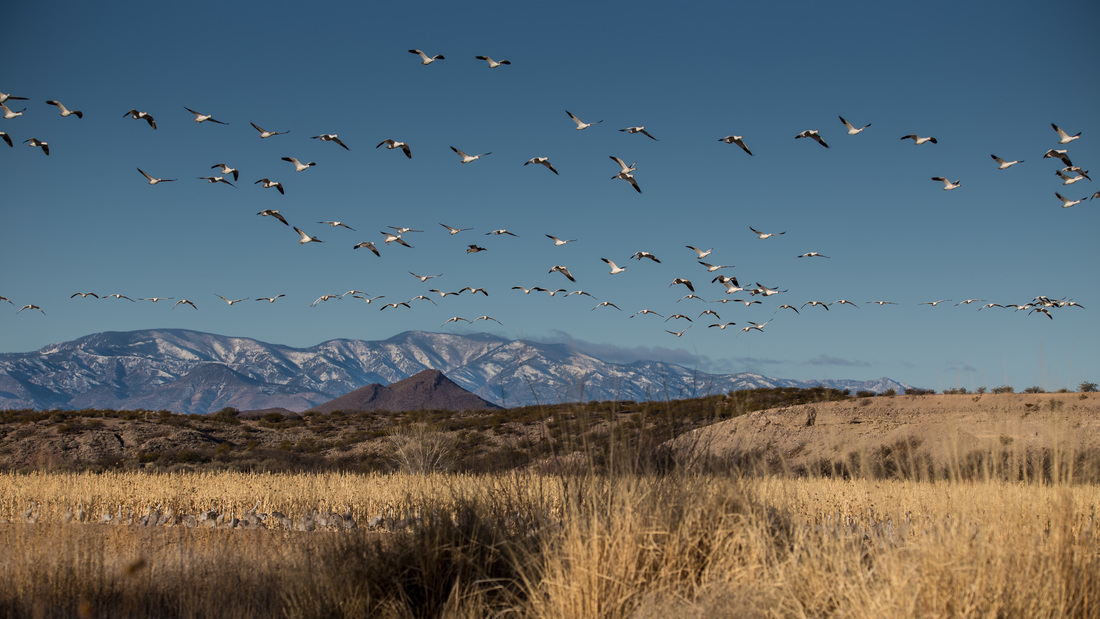
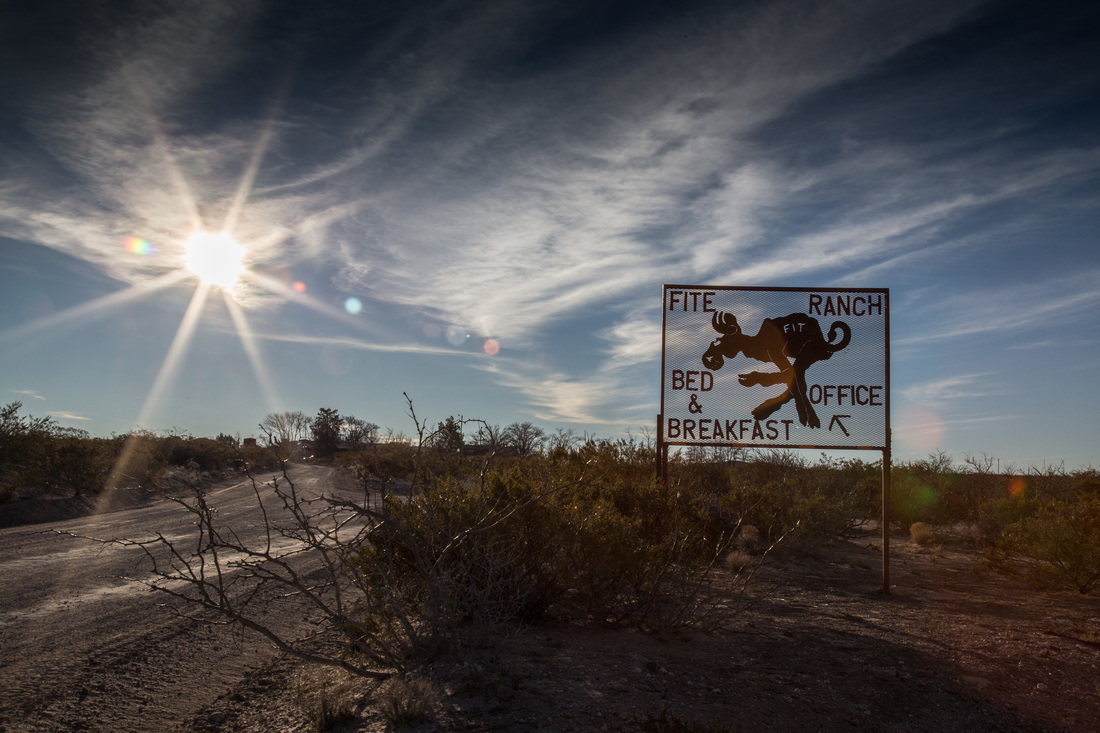
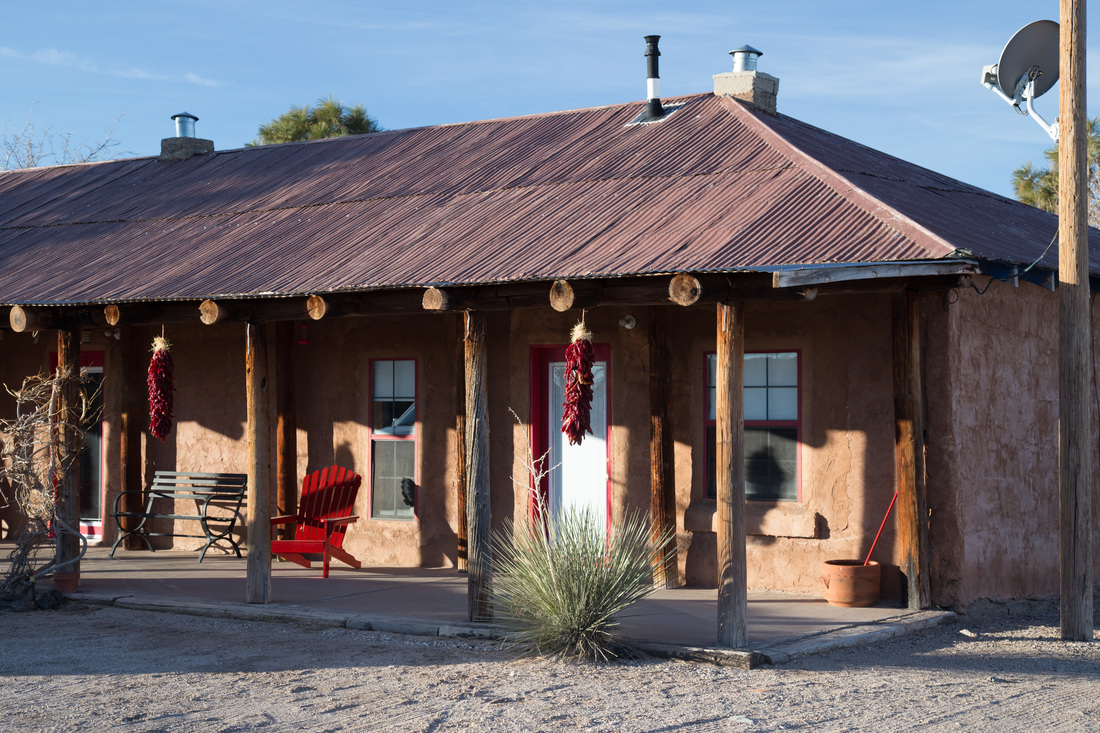

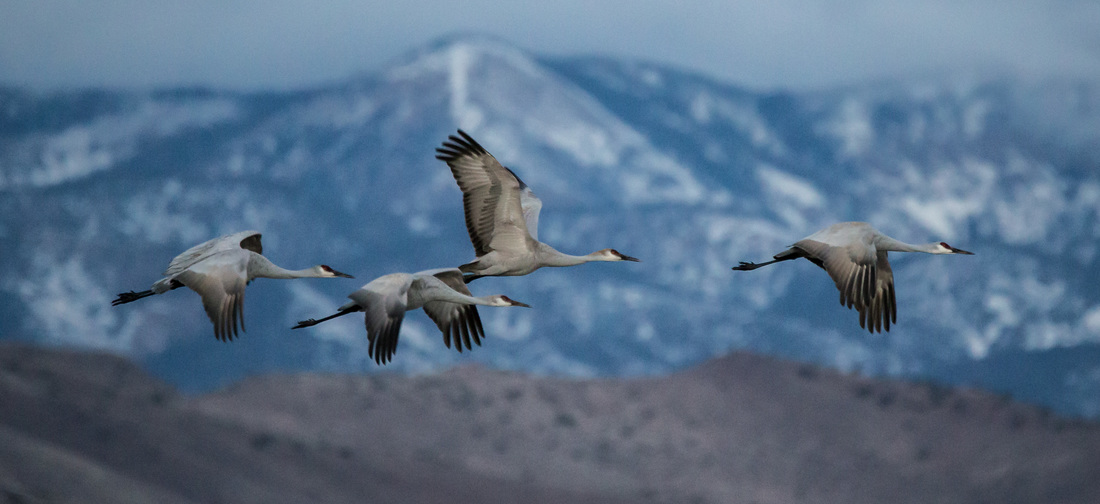
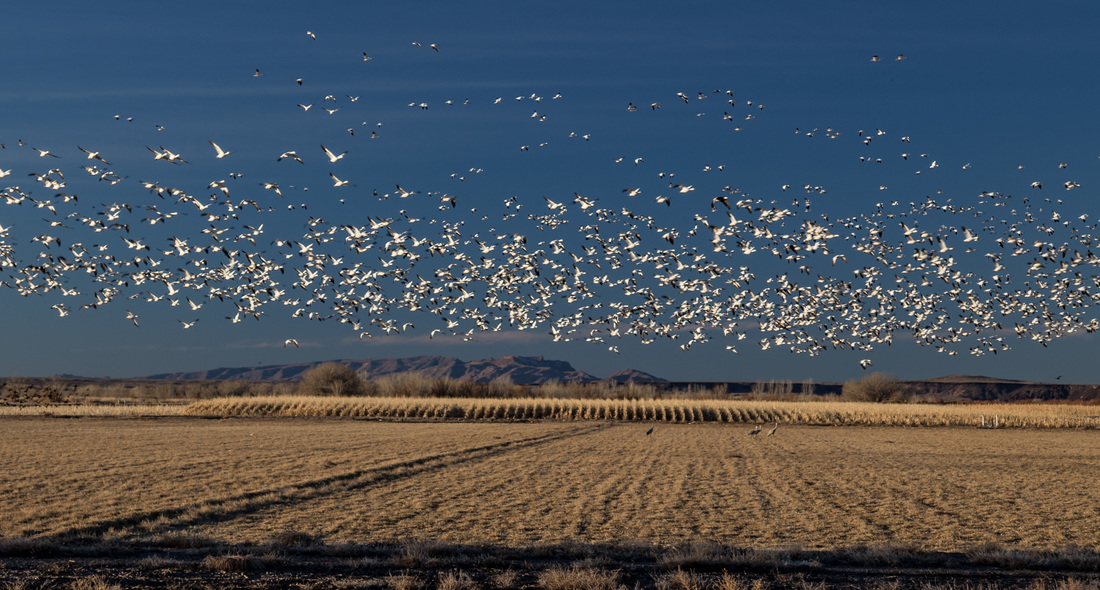
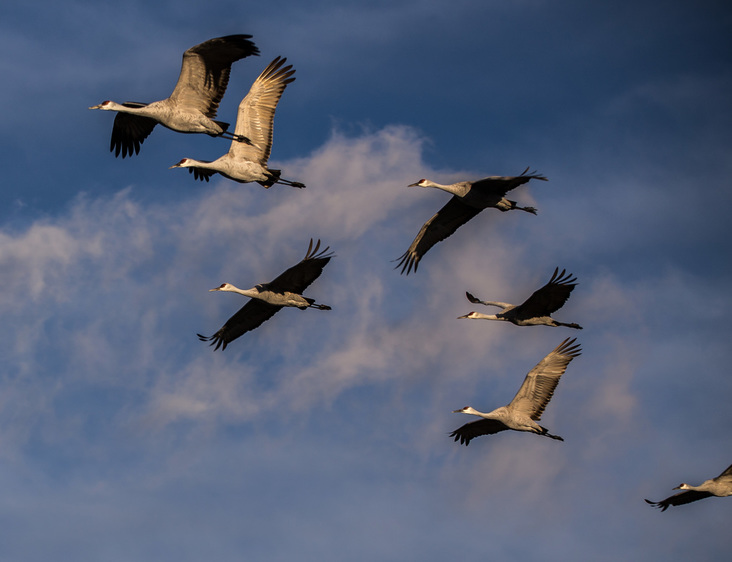
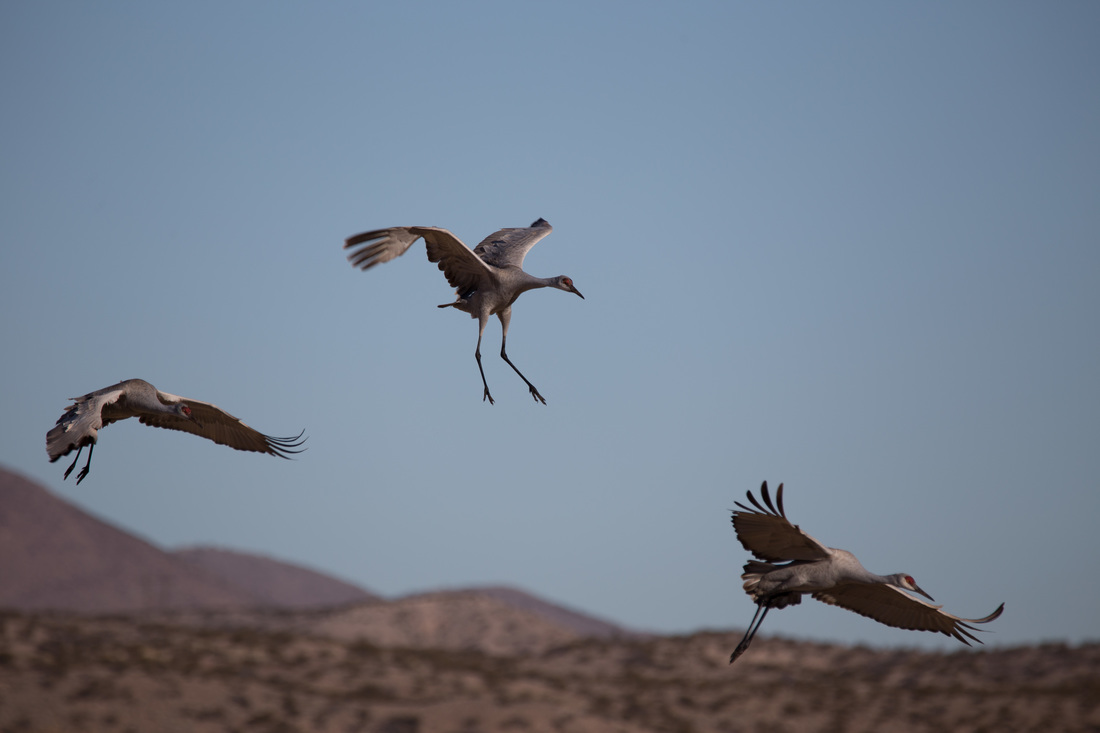
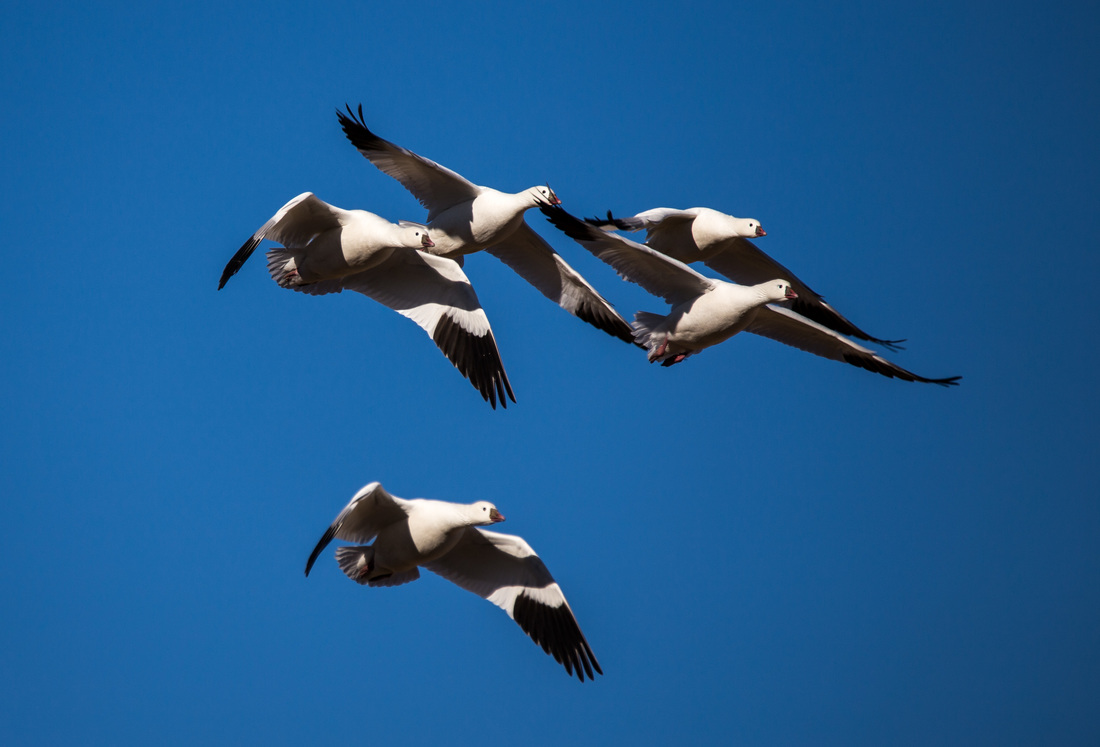
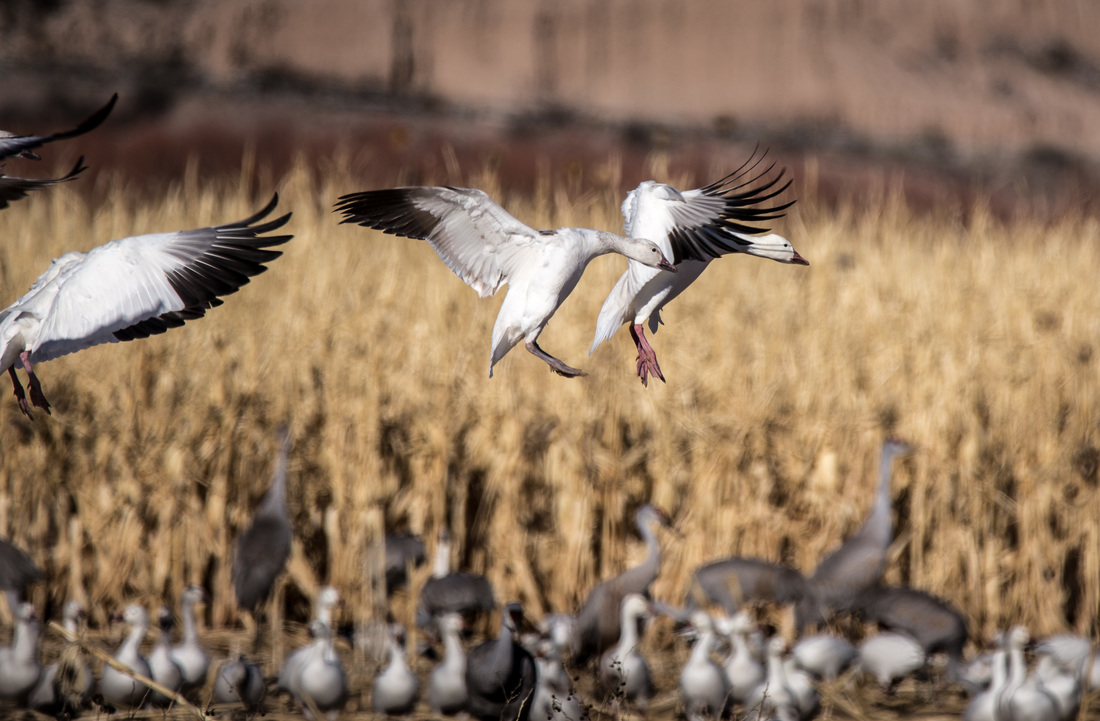
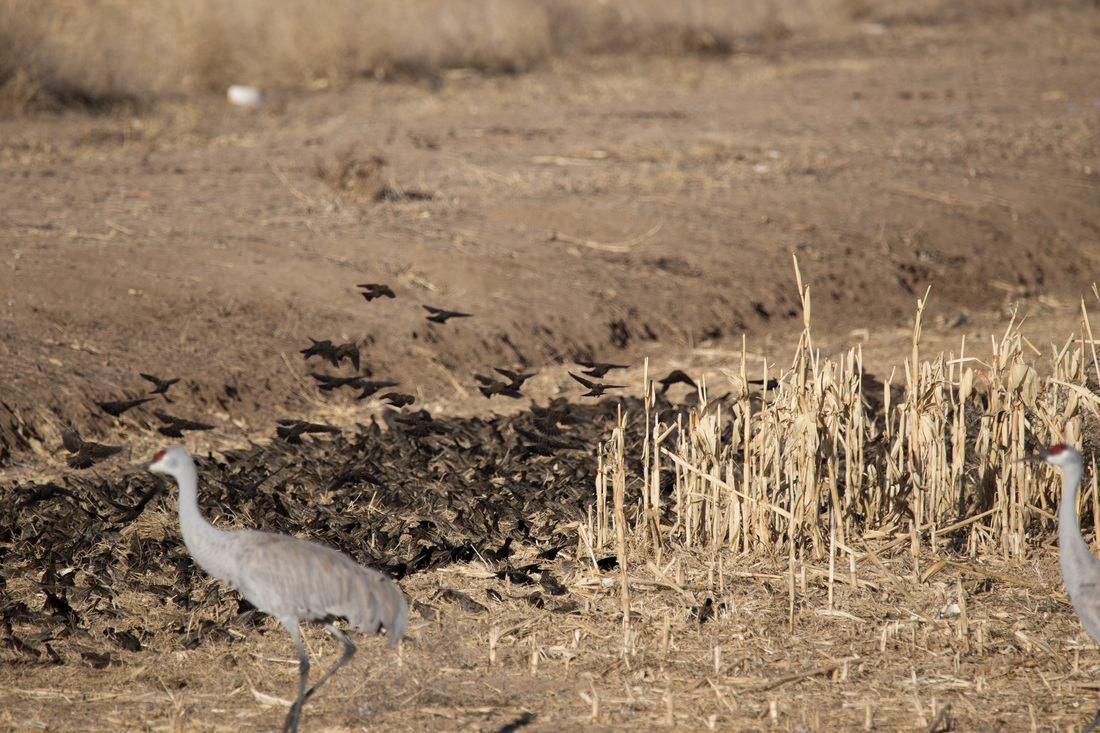
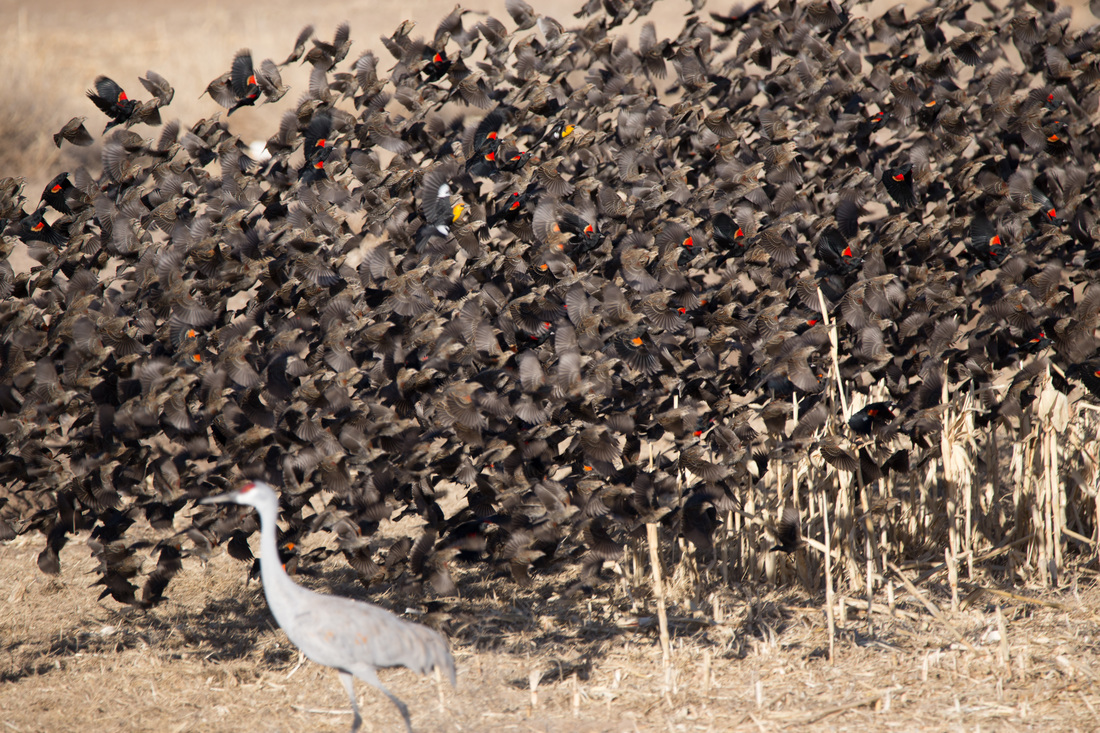
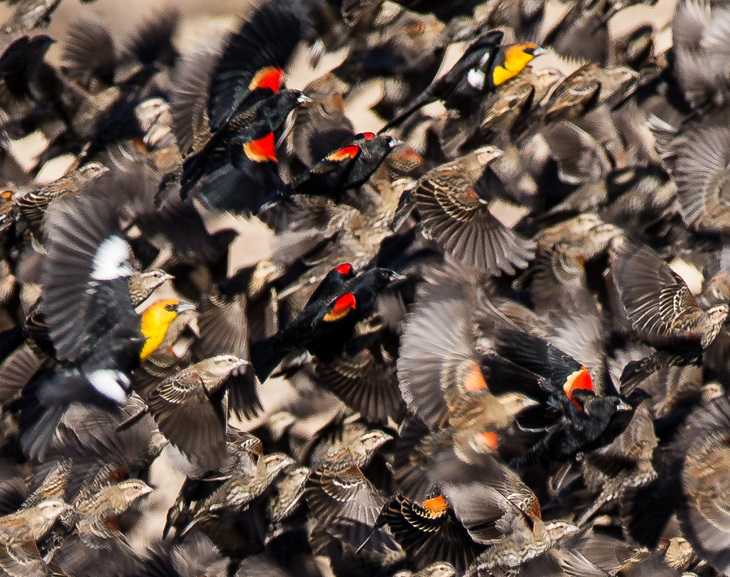
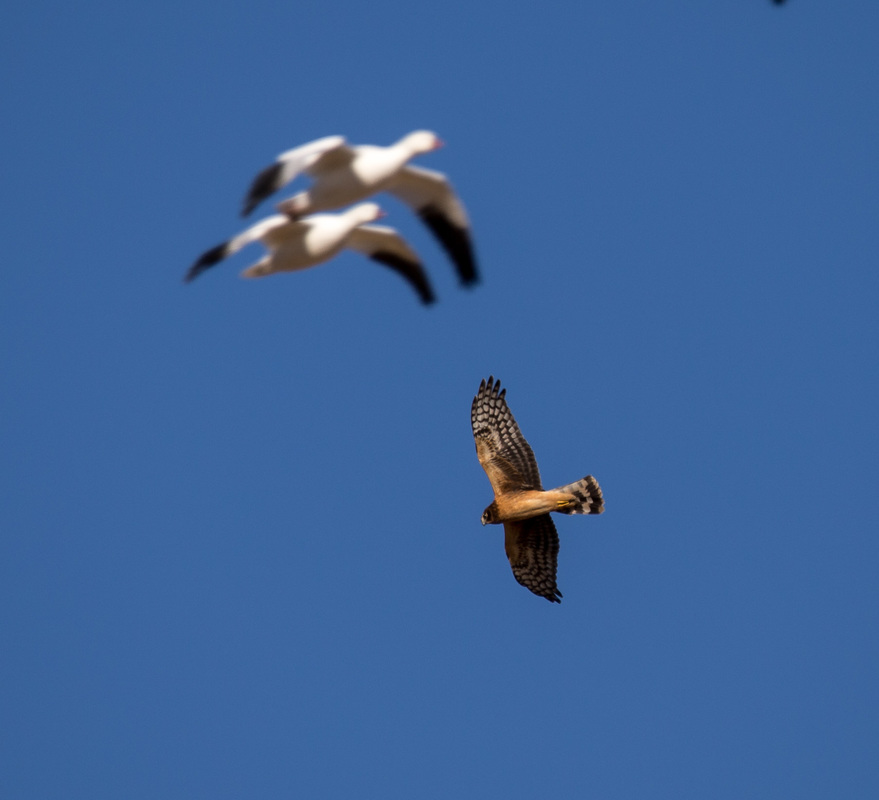
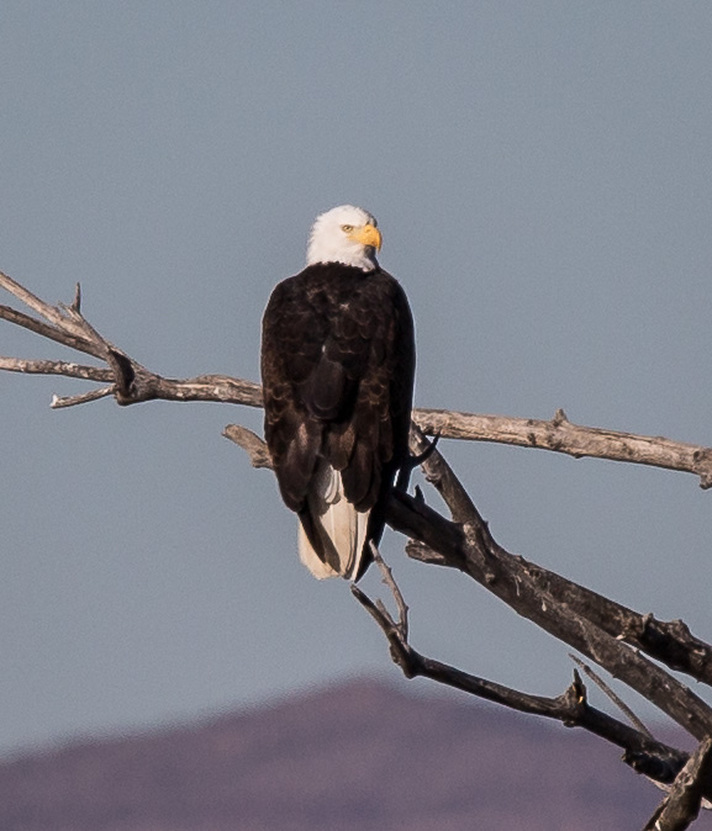
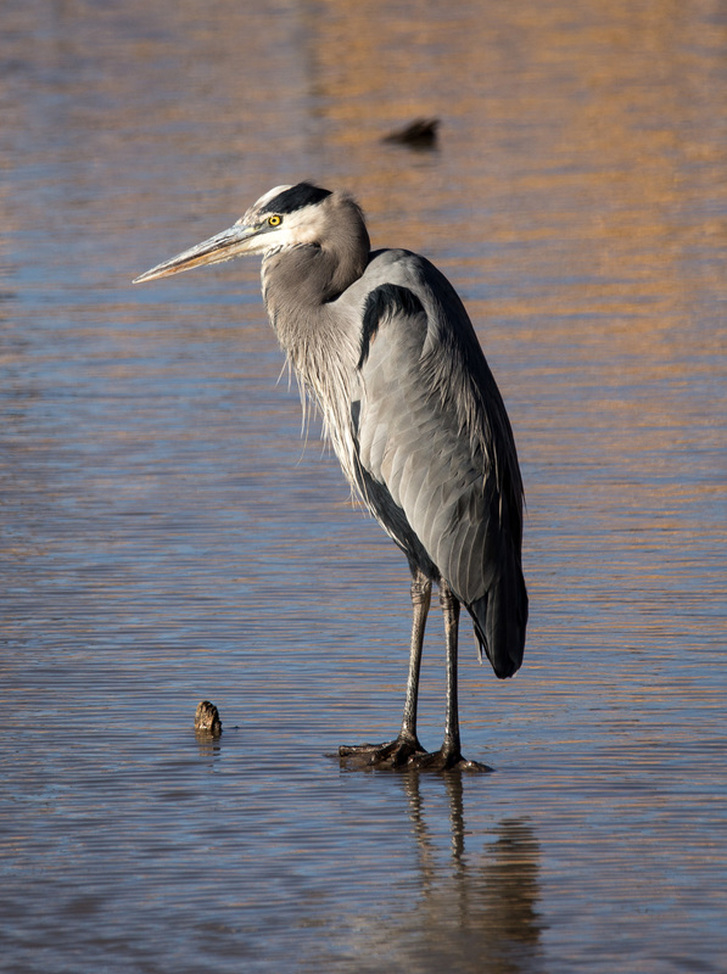

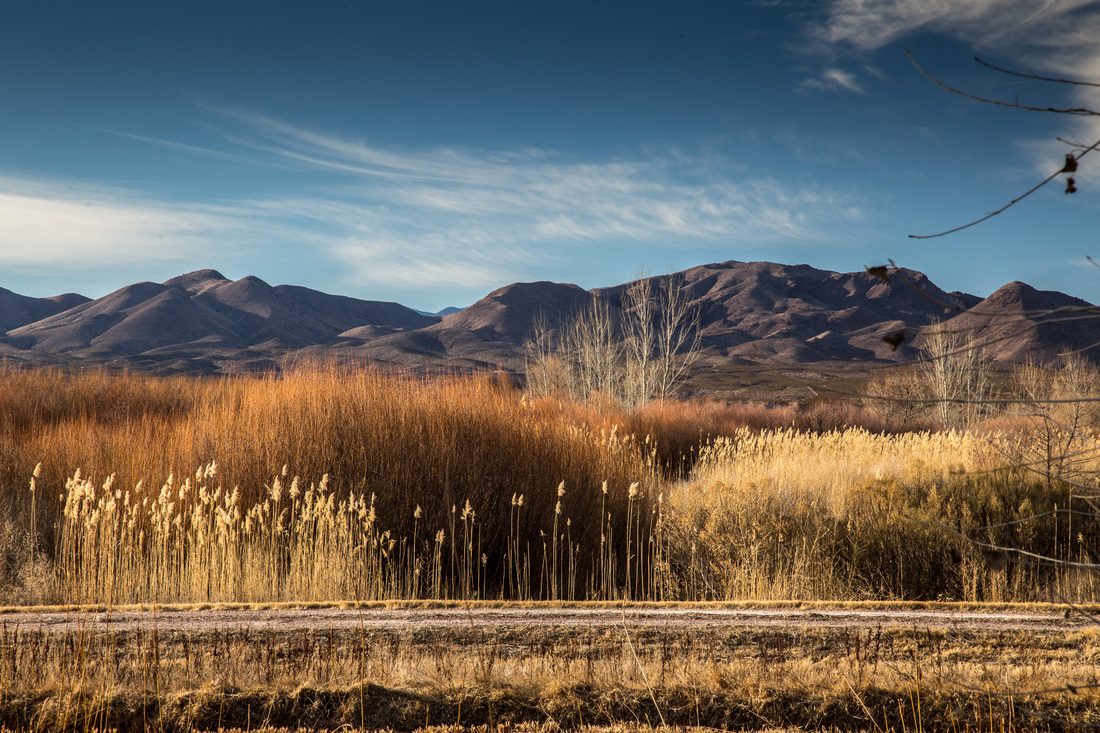
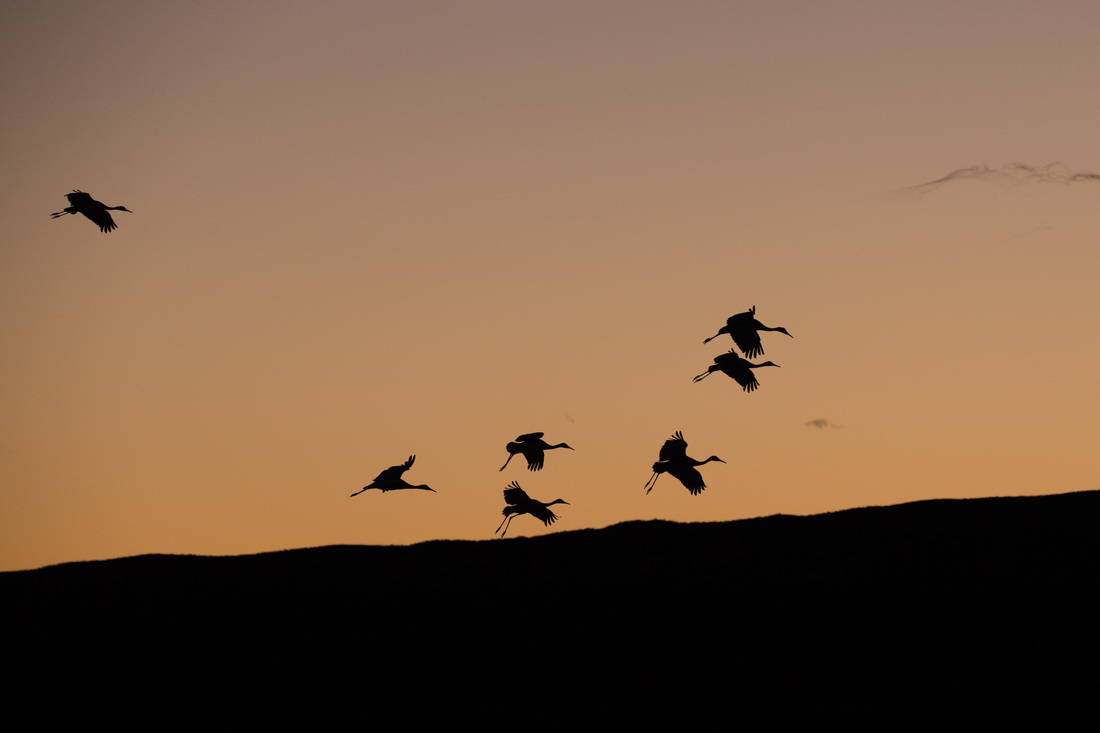
 RSS Feed
RSS Feed